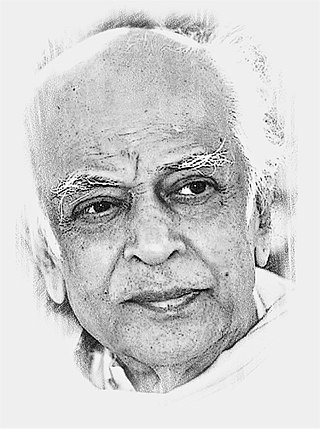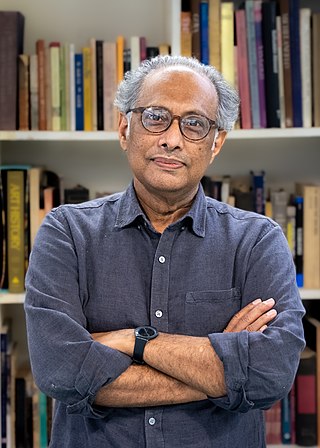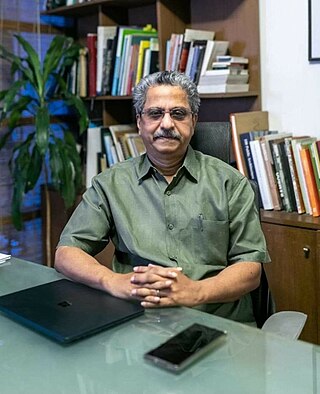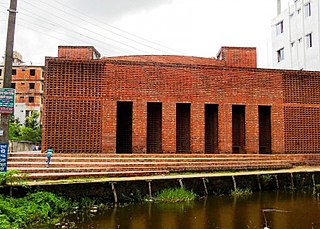
The Aga Khan Award for Architecture (AKAA) is an architectural prize established by Aga Khan IV in 1977. It aims to identify and reward architectural concepts that successfully address the needs and aspirations of Muslim societies in the fields of contemporary design, social housing, community development and improvement, restoration, reuse and area conservation, as well as landscape design and improvement of the environment.

Muzharul Islam was a Bangladeshi architect, urban planner, educator and activist. He is considered as the Grand Master of regional modernism in South Asia. Islam is the pioneer of modern architecture in Bangladesh and the father of Bangali modernism. Islam's style and influence dominated the architectural scene in the country during the 1960s and 70s, along with major US architects he brought to work in Dhaka.

Rasem Jamal Badran is a Saudi Arabian/Jordanian architect of Palestinian descent whose works are based on a methodological approach in defining Architecture as a continuous dialogue between contemporary needs and historical inherited cultural values.
Mustapha Khalid Palash is a Bangladeshi architect. He is considered one of the leading contemporary architects of Bangladesh. He is also an artist, multi instrumentalist-singer and painter. He is the editor of quarterly DOT: Journal on Art & Architecture, one of the prominent architecture magazines of Bangladesh.

Bashirul Haq was a Bangladeshi architect, town planner and visiting professor of MIT. He was regarded as one of the most influential architects in South Asia in terms of environmentally and socially responsive design.
Enamul Karim Nirjhar is a Bangladeshi architect and filmmaker.
Friendship is a needs-driven non-governmental organisation that works in the Char islands and riverbanks of northern Bangladesh, the coastal belt in the south, and as of 2017, the Rohingya refugee camps in Ukhia, Cox's Bazar in the southeast. Established by Runa Khan in 2002, Friendship works to empower people through a sustainable, integrated development approach.
Bangladesh is one of the most vulnerable nations in the world due to climate change. As the ninth most populous country and twelfth most densely populated countries in the world, its rising population and limited land space have put tremendous strains on the urban ecosystem. The capital of Dhaka itself underwent severe transformations in recent years to catch up the increased rate of urbanisation. This change was paralleled by a boom in the real estate, construction and housing industry. According to United Nations Population Fund (UNFPA), Dhaka is one of the most polluted cities in the world.

Sahibzada Sanwar Azam Sunny is a Bangladeshi-born American artist, environmental activist and entrepreneur. He became fluent in multiple languages and is one of the youngest artists to have a solo exhibition at the National Art Gallery with work in permanent collection at the Liberation War Museum. He finished four years of American high school in eight months with honours and was a college senior by the age of eighteen, teaching university courses in engineering at the age of 21.

The Samdani Art Foundation is a private art foundation founded in 2011 in Dhaka, Bangladesh that aims to increase artistic engagement between the art and architecture of Bangladesh and the rest of the world. It is best known for producing the bi-annual Dhaka Art Summit, which is the highest daily visited contemporary art exhibition in the world, welcoming over 477,000 visitors in its fifth edition in February 2020. It completed its sixth edition in 2023. The foundation produces education programmes and exhibitions across the year in collaboration with Bangladeshi and international institutions and is one of the most active art institutions in South Asia.
Khondaker Hasibul Kabir is a Bangladeshi landscape architect and sustainability advocate who works with Bangladeshi development agencies such as BRAC and Grameen in rural and sustainable architecture. He first proposed "The Platform of Hope" in 2007 when he moved personally in with family in the slums and designed a community space. It was showcased in the Cooper–Hewitt, National Design Museum in New York City. He also worked with German Architect Anna Heringer on the METI Handmade School in Rudrapur, Bangladesh which received the Aga Khan Award for Architecture in 2007.

Kazi Khaleed Ashraf is a Bangladeshi architect, urbanist and architectural historian. Writing from the intersection of architecture, landscape and the city, Ashraf has authored books and essays on architecture in India and Bangladesh, the work of Louis Kahn, and the city of Dhaka. His various writings on the architecture of Bangladesh have provided a theoretical ground for understanding both the historical and contemporary forms of architecture, while his written and design work on Dhaka advances that city as a "theorem" for understanding urbanism in a deltaic geography. Ashraf and contributing team received the Pierre Vago Journalism Award from the International Committee of Architectural Critics for the Architectural Design publication Made in India. He has also co-authored a number of publications with the architect Saif Ul Haque. Ashraf has recently established an international publication series called Locations: Anthology of Architecture and Urbanism that will present works and features from around the globe.
Kashef Mahboob Chowdhury is a Bangladeshi architect.

Saif Ul Haque is an architect and educator based in Dhaka. He received Aga Khan Award for Architecture in 2017-2019 cycle.

Jalal Ahmad is a practicing Bangladeshi architect. He is the Ex-President of Institute of Architects Bangladesh and the vice president of Commonwealth Association of Architects.
Ehsan Khan is a Bangladeshi architect and Urban Designer.

Abu Sayeed Mostaque Ahmed is an architect and architectural conservation specialist from Bangladesh.

Marina Tabassum is a Bangladeshi architect. She is the principal architect of Marina Tabassum Architects.

The Bait Ur Rouf Mosque is a distinctive urban mosque located in Dhaka, Bangladesh. Designed by Bangladeshi architect Marina Tabassum and completed in 2012, it has been called a refuge of spirituality in urban Dhaka and received recognition for its beautiful use of natural light and for challenging the status quo of traditional mosque design. Instead of traditional symbolism such as domes and minarets, the mosque relies on open space and the rich interplay of light and shadow to create a prayer space that elevates the spirit.

















